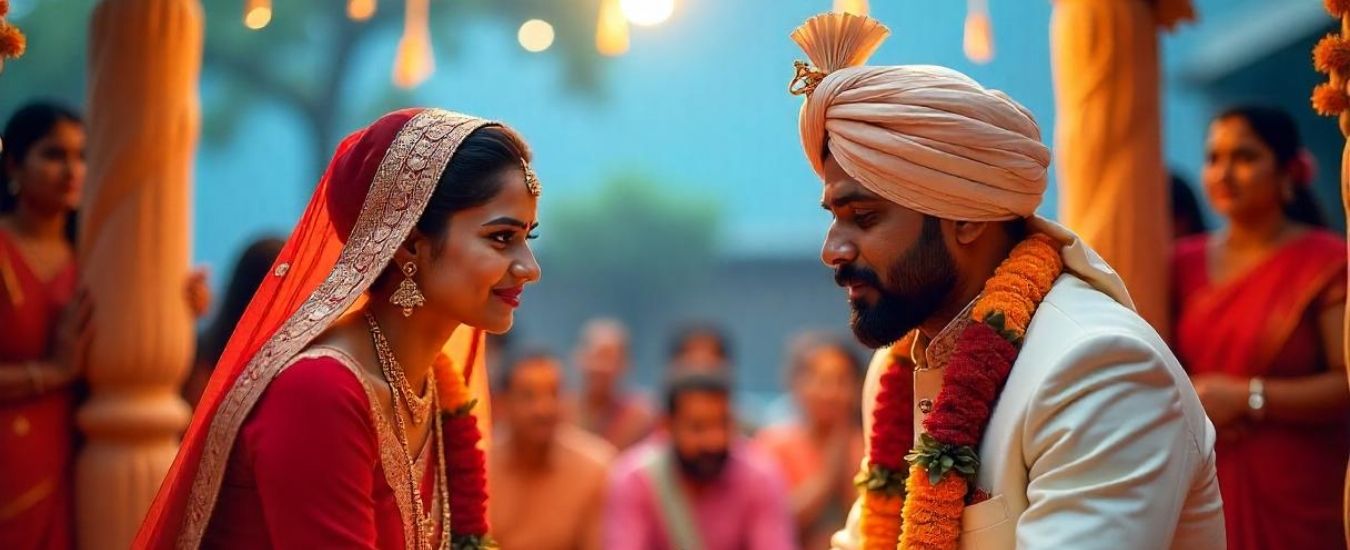Jain weddings are like a calm river—graceful, meaningful, and deeply rooted in spiritual traditions. While some Indian weddings are known for their over-the-top extravagance, Jain nuptials stand out with their simplicity, elegance, and spiritual grounding. But don’t get it twisted—just because they’re not flashy doesn’t mean they lack colour, joy, or festivity.
A Jain wedding is a beautiful fusion of dharma, tradition, and familial unity.
Understanding the Jain Community
Who are the Jains?
Jains are followers of Jainism, a religion founded by Tirthankara Mahavira around the 6th century BCE. The community values Ahimsa (non-violence), truth, and self-discipline.
Core Values and Beliefs
At its heart, Jainism emphasizes simplicity, karma, and spiritual growth. These ideals extend to all life decisions—including marriage.
Marriage as a Sacred Duty
In Jain philosophy, marriage is a sacred bond that supports two souls on their journey of spiritual evolution and ethical living.
Pre-Wedding Rituals in a Jain Wedding
Khol Barana (Engagement Ceremony)
This ritual symbolizes the formal alliance between families, where the bride’s side visits the groom’s home with auspicious gifts.
Lagna Lekhan and Lagna Patrika Vachan
The Jain priest (Pandit) writes the sacred wedding time (Lagna), which is then announced to both families.
Maatri Puja and Snatra Puja
Rituals are held in both homes for karmic purification and ancestral blessings.
Mehendi and Sangeet (Modern Additions)
While not originally part of Jain culture, these are now often held in the lead-up to the wedding day, bringing colour and celebration.
Invitation & E-Invites
Today, many Jain families also use digital wedding websites and e-invites for sustainability and efficiency.
The Wedding Day Ceremonies
Ghudchadi and Baraat Procession
The groom arrives in a decorated car or horse, joined by a joyous baraat featuring music and dancing.
Mandap Arrival and Aarti
At the venue, the bride’s family greets him with a traditional aarti and marigold garlands under a beautifully arranged mandap.
Granthi Bandhan and Mangal Pheras
The sacred thread is tied, symbolizing unity. The couple performs Mangal Pheras around the holy fire, taking sacred vows for their married life.
Kanyadaan and Havan
The bride’s parents perform the kanyadaan, entrusting their daughter to the groom. This is followed by a Havan, where mantras are chanted for divine blessings.
Post-Wedding Rituals
Bidaai
An emotional farewell as the bride leaves her family for her new home.
Griha Pravesh
She is welcomed into the groom’s home with a traditional diya ritual and often a small house puja.
Reception Ceremony
Though not customary, many families host a reception with extended community members.
Jain Wedding Attire and Symbolism
Bridal and Groom Outfits
The bride wears a saree or Bandhani lehenga in red, gold, or pink, while the groom dons a sherwani, turban, and often a dupattā.
Jewellery and Symbols
Jewellery is minimalistic, often with spiritual motifs like lotus or Om.
Jain Wedding Food: A Pure Delight
Strictly Sattvic and Vegetarian
No onion, garlic, or root vegetables. Everything is spiritually pure and aligned with Jain dietary laws.
Popular Jain Dishes
Expect khandvi, dal bati, khichdi, and eggless sweets served on eco-friendly plates.
Charity Over Waste
Food waste is minimized, and leftovers are often donated to community kitchens or temples.
The Spiritual Element in Jain Marriages
Pujas and Mantras
Sacred mantras focus on values like truth, fidelity, and compassion.
Blessings from Jain Monks
Often, Jain monks provide moral and spiritual counsel during or before the wedding.
Inter-caste and Interfaith Jain Weddings – Modern Realities
Today, interfaith or intercaste marriages are more common, often handled with care and community dialogue under monk consultation.
Astrology and Kundli Matching – Spiritual Compatibility
Matching of Kundlis, Gun Milaan, and Nakshatras ensures emotional, karmic, and spiritual alignment.
Environmental Consciousness in Jain Weddings
Sustainable Weddings
From zero-plastic decor to biodegradable cutlery, sustainability is prioritized.
Acts of Seva
Families often donate to Jain schools and temples or sponsor Paryushana events as part of their wedding.
Regional Variations
Digambara vs. Svetambara
While both sects follow core principles, there are differences in ritual chants, attire, and priest involvement.
Gujarat, Maharashtra, Rajasthan Influence
Each region brings its linguistic and sartorial flavours to the Jain wedding experience.
FAQs
What makes a Jain wedding different from a Hindu wedding?
While both share some Vedic roots, Jain weddings are generally simpler, avoid animal products entirely, and follow unique spiritual rituals.
Is meat or alcohol served at Jain weddings?
Never. Jainism strictly prohibits both, and weddings reflect that.
Can non-Jains attend Jain weddings?
Absolutely! Guests are welcome to witness and celebrate, though they’re expected to respect the traditions.
How long does a typical Jain wedding last?
Usually 2–3 days, including pre-wedding rituals, the wedding, and a reception.
What are some must-know customs for Jain brides and grooms?
Understanding basic rituals like Mangal Pheras, Kanyadaan, and Snatra Puja is important. Simplicity, spiritual intent, and respect for elders are key.
